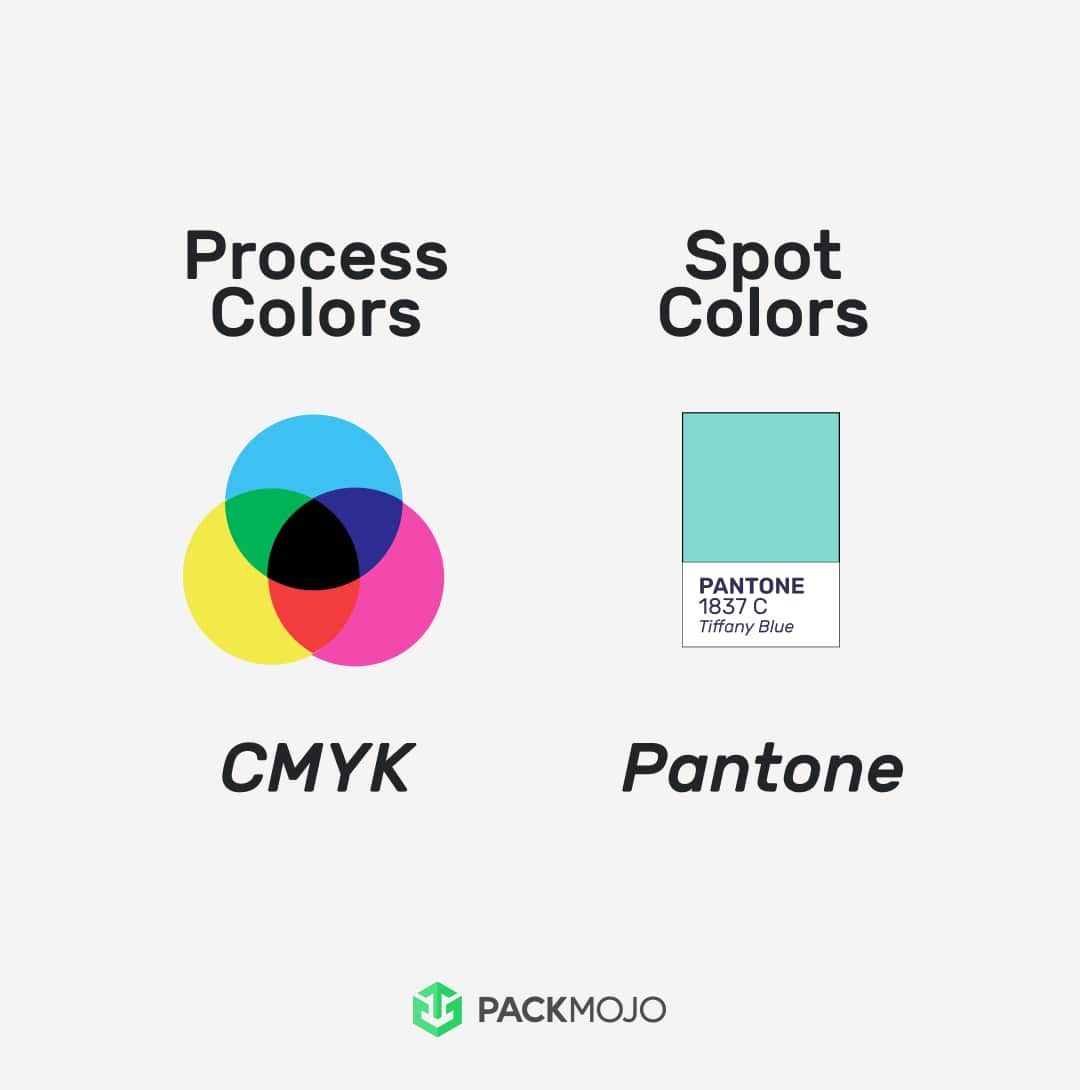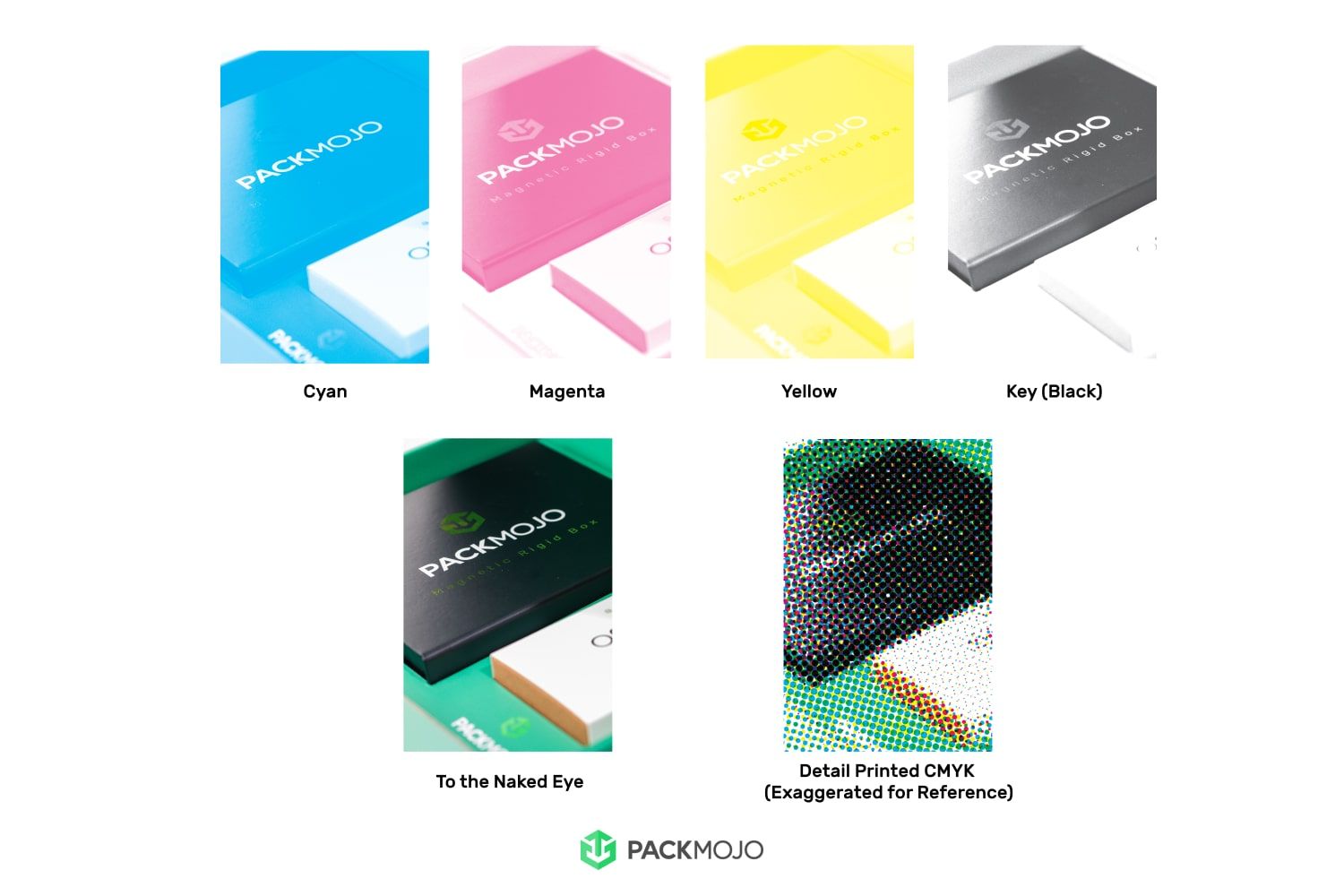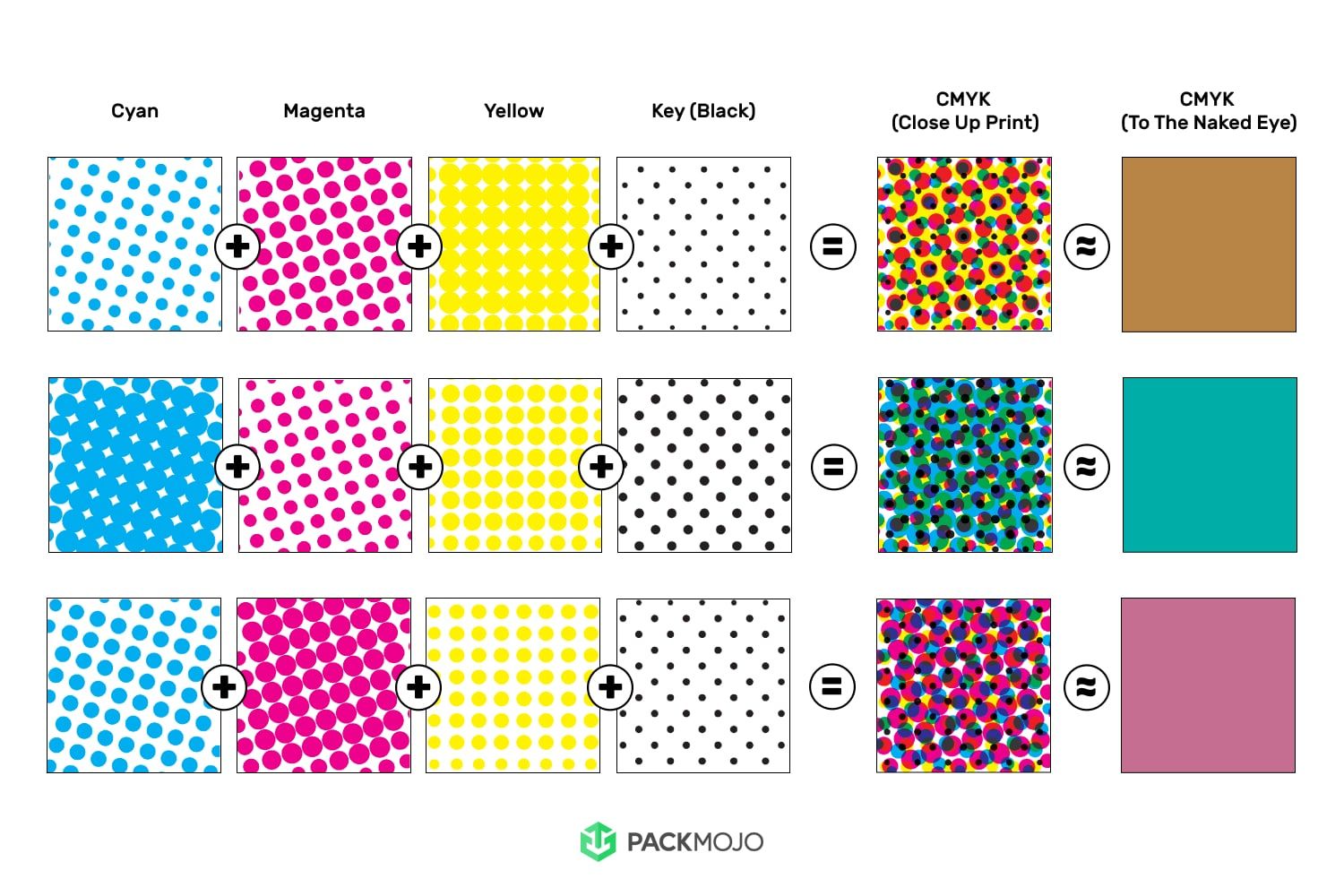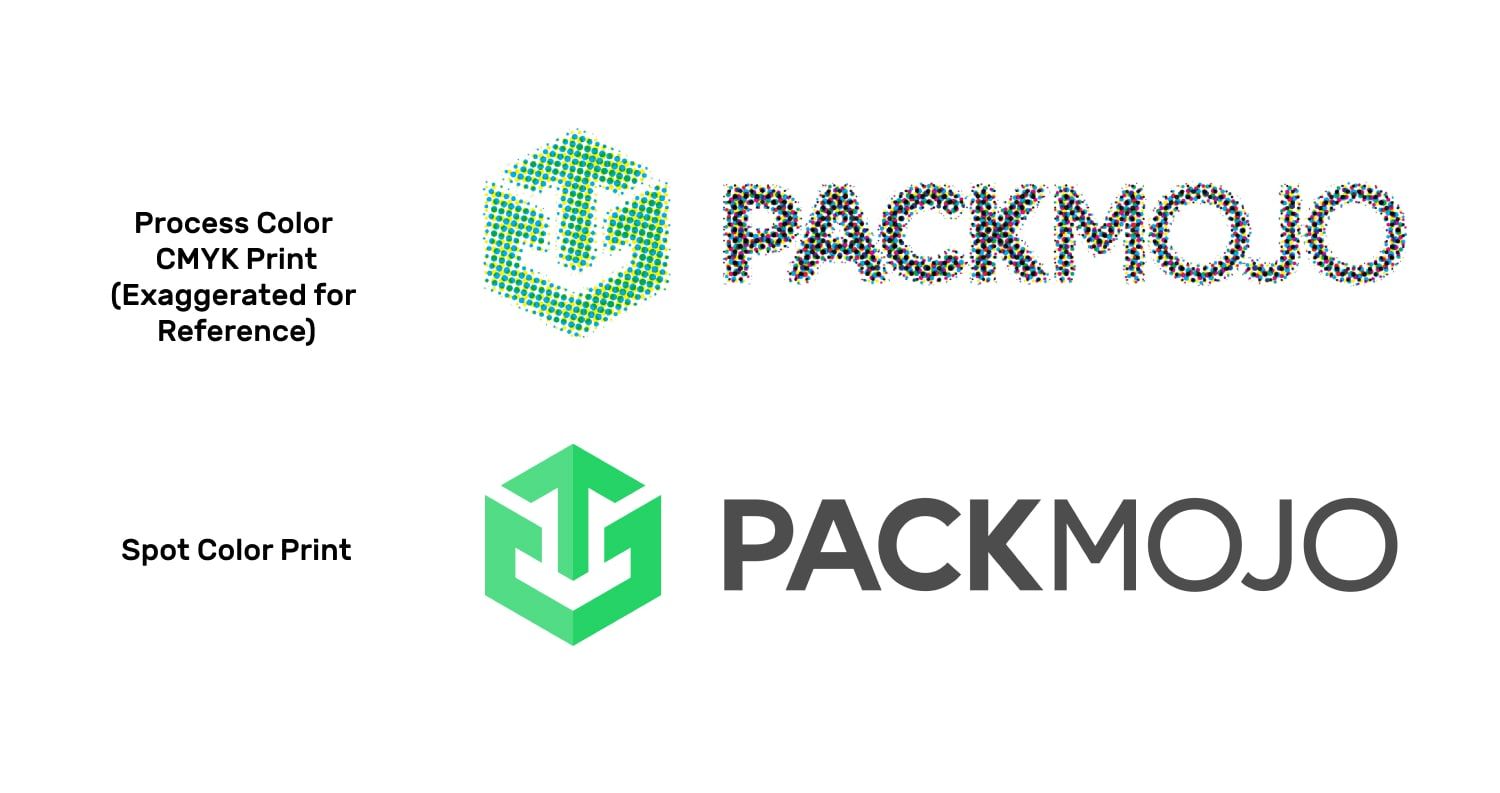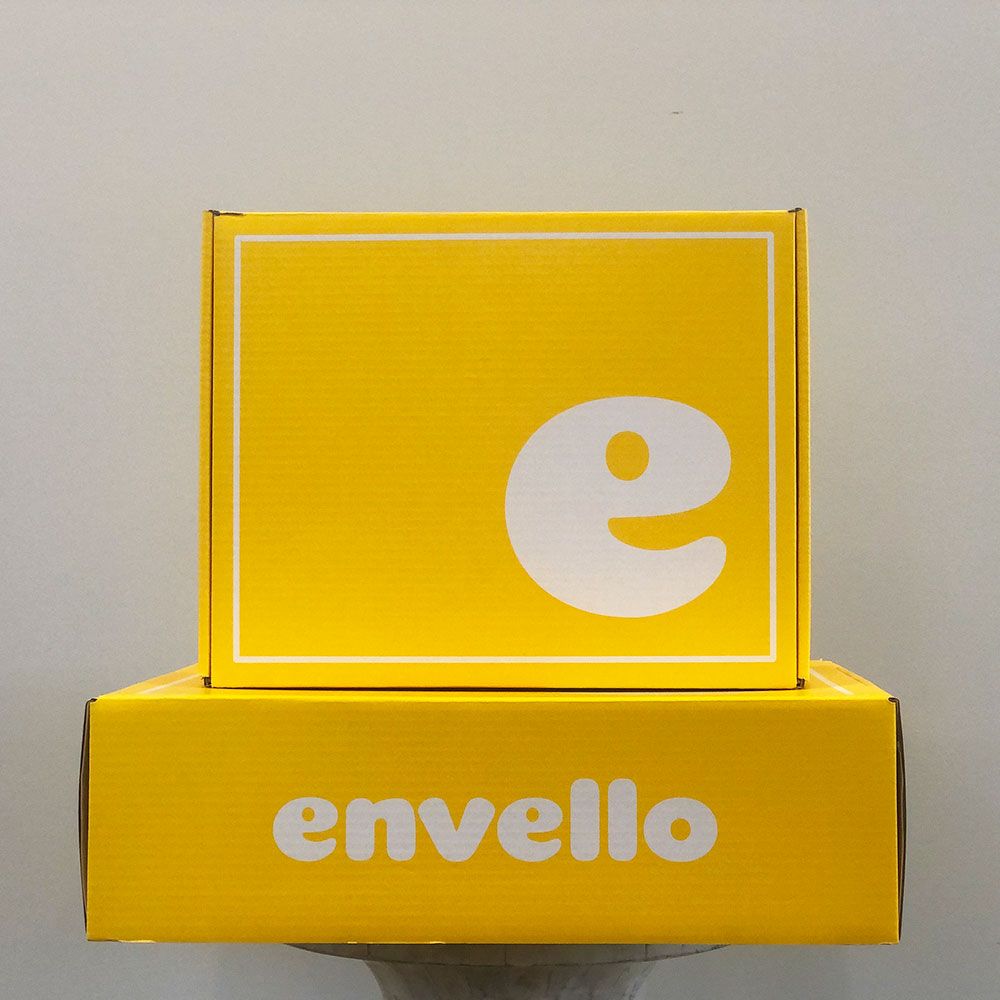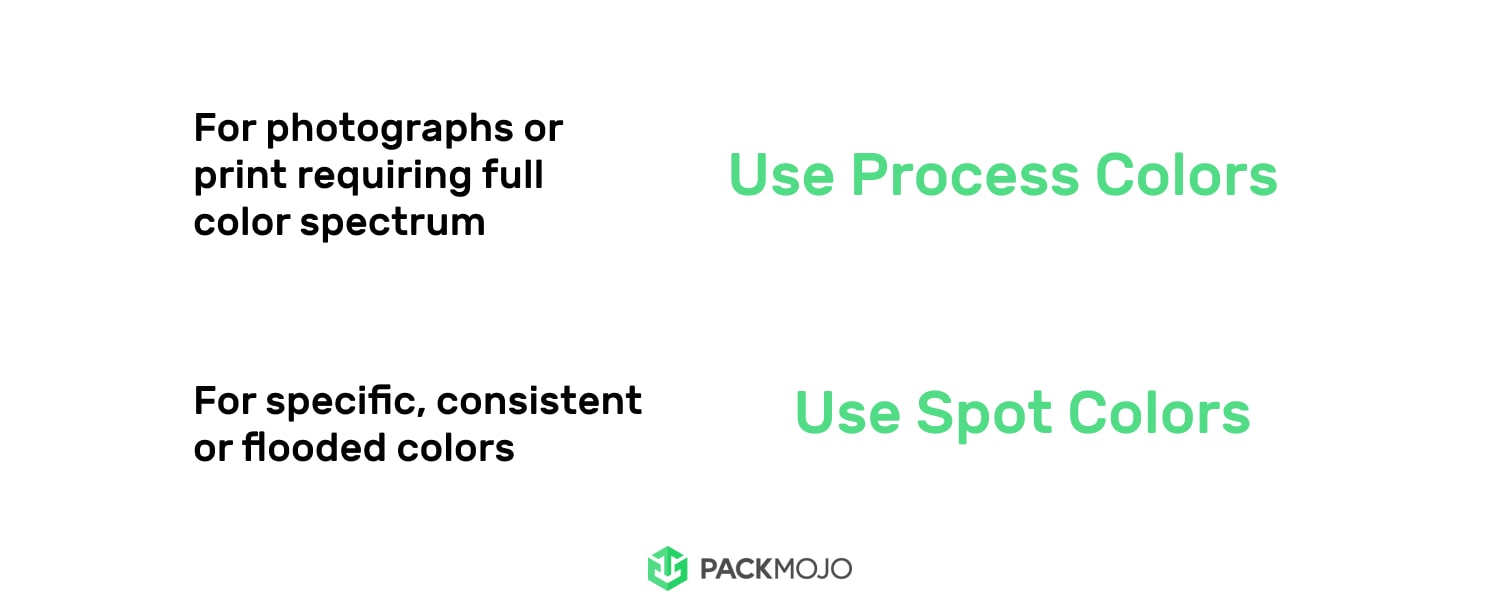There are many brands with their own classification of spot colors, with Pantone being the leading global brand. Though Pantone is the most universally known color guide, it is important to note that there are other color guides such as RAL, Toyo, DIC, ANPA, GCMI, HKS. In short, spot color is the technique of using a premixed color, and Pantone is the most universally used color guide system that utilizes this technique and helps people identify specific colors.
For spot colors, color tuning for accounting for paper type and print finishes is done such that it aims to produce the exact same specific color, resulting in consistent color across different runs, machines and suppliers. If there is an exact color you’re chasing, spot color will allow you to achieve that. Do note that since print facilities often have a limited number of print towers, this will limit the number of spot colors you are able to use. As most facilities have six towers, four of which are used for CMYK, the limit for spot colors is typically two. If you require more, it is best to speak with your packaging producer as they may be able to accommodate more for a higher cost.
